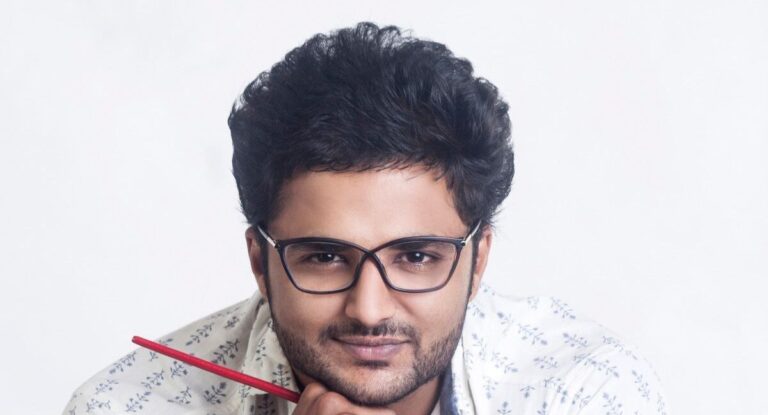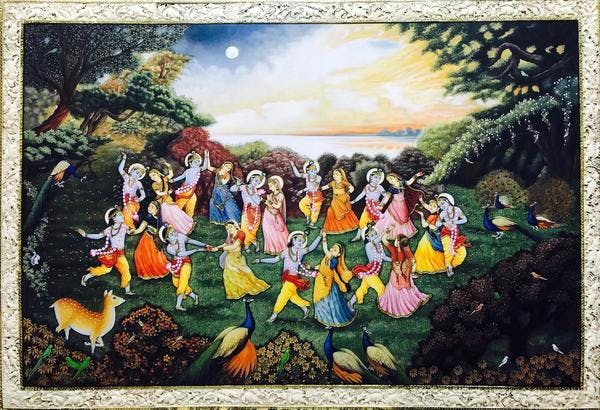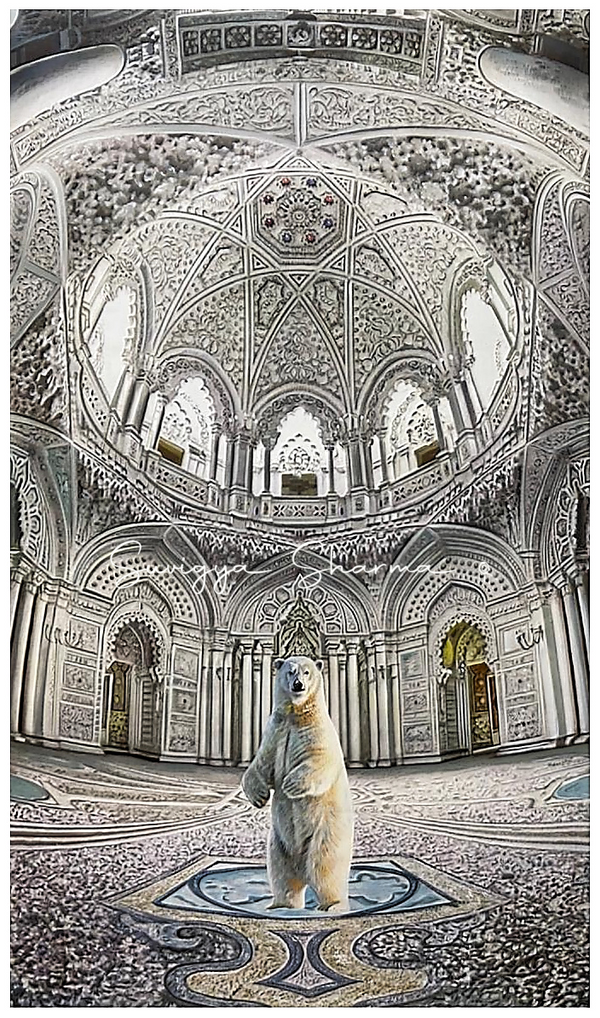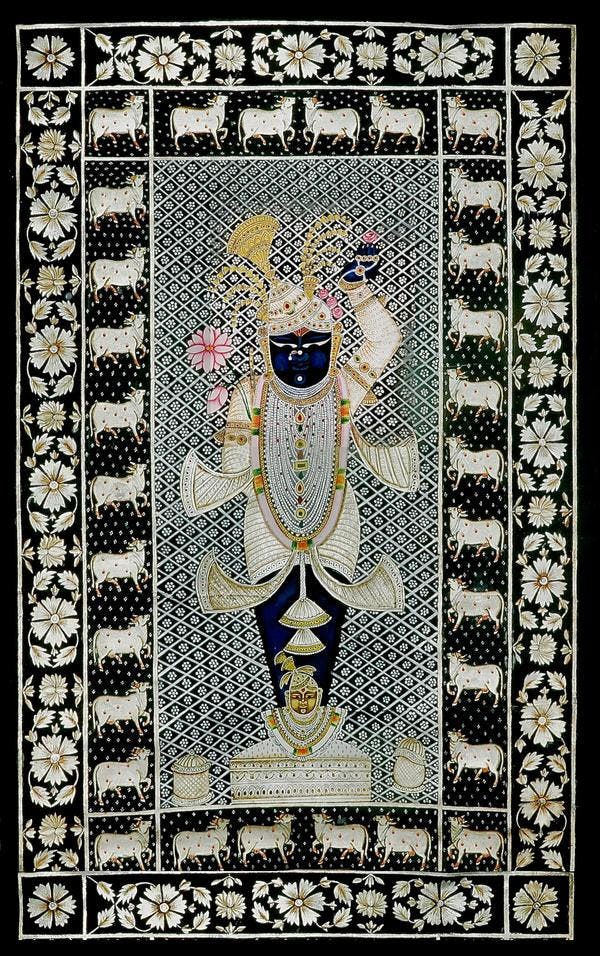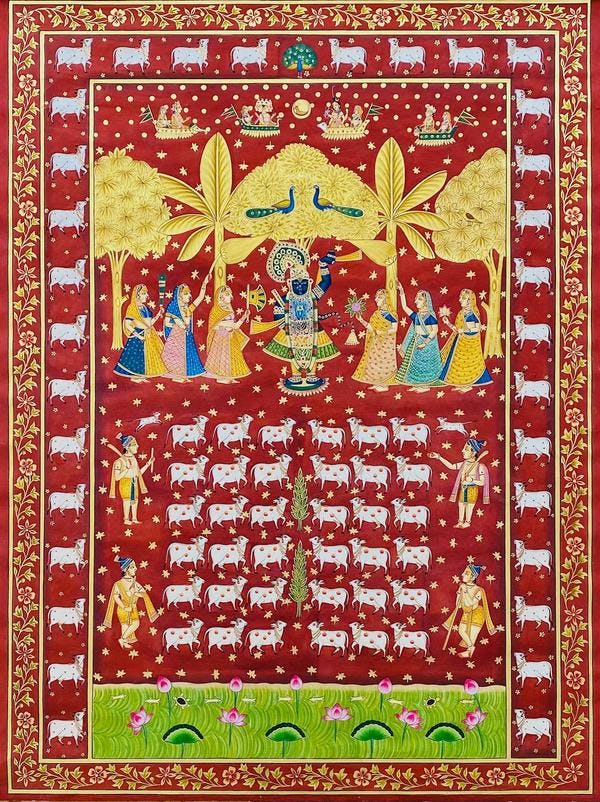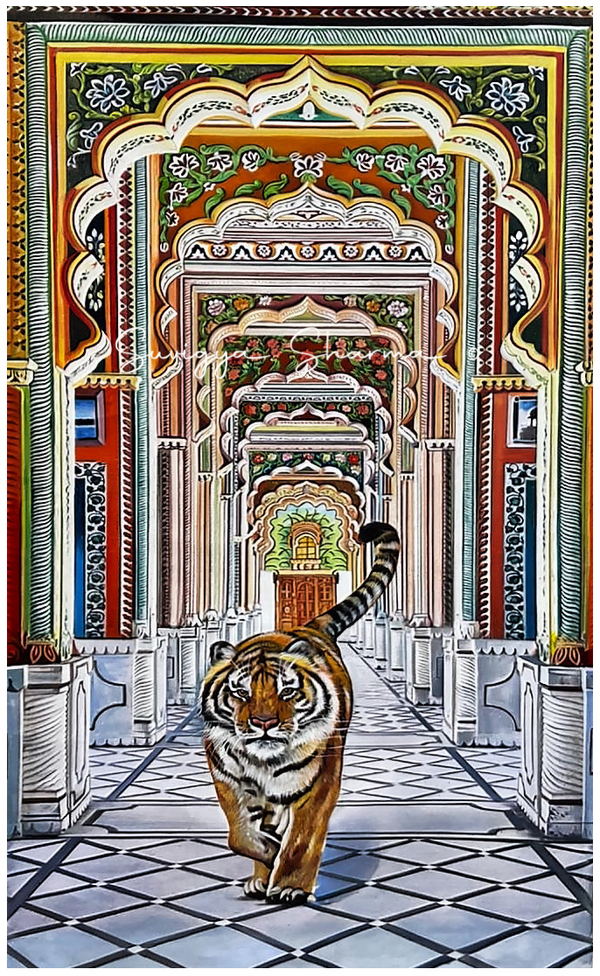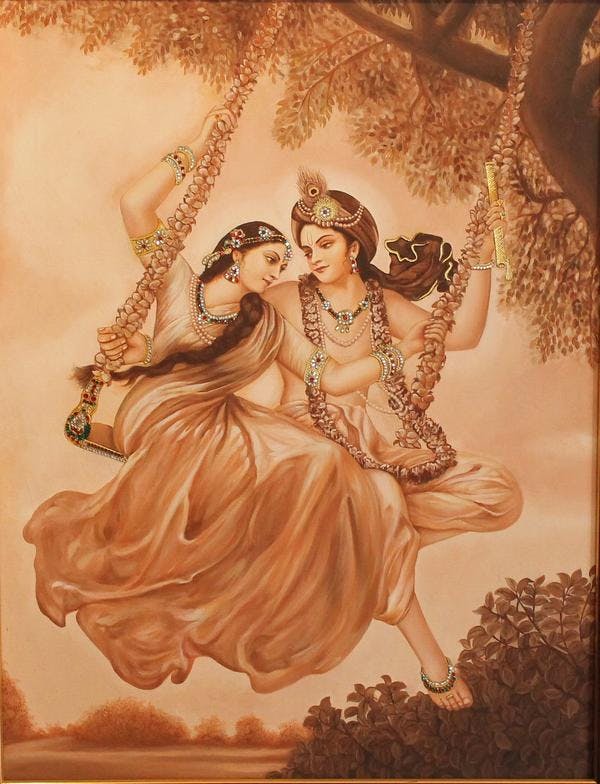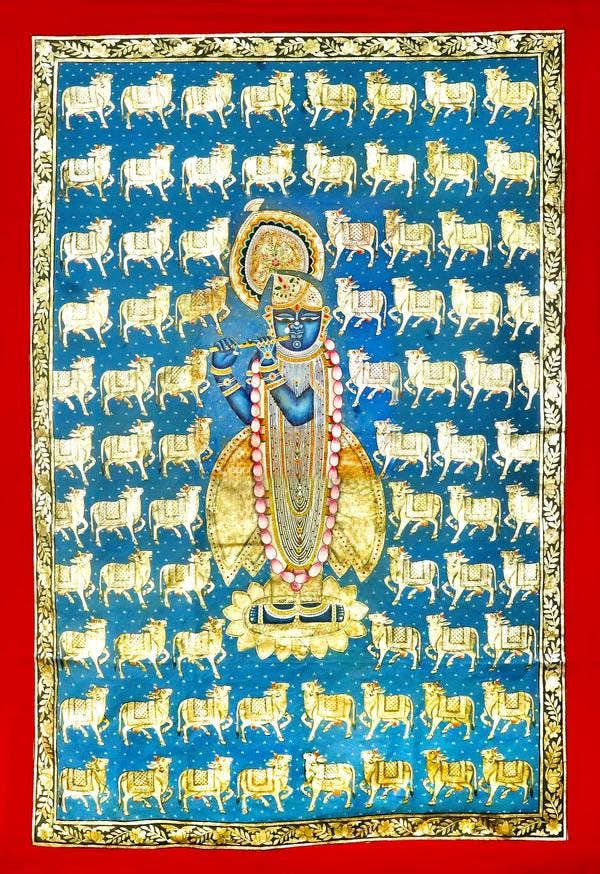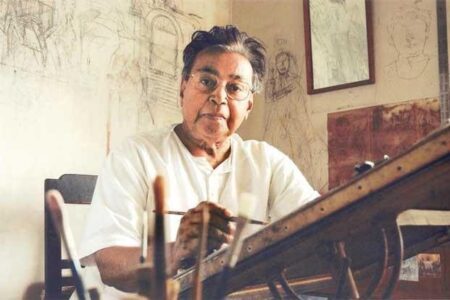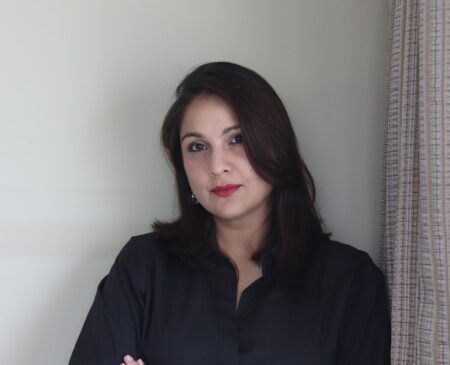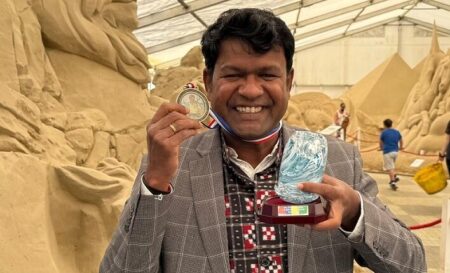Jaipur-based miniature artist Suvigya Sharma specialises in Pichwais, refined Tanjores, Piquas and portraits. He has recently launched his first collection of NFTs.
Please tell us about the exhibition Enticing Pichwais. How did you learn this style of painting?
Enticing Pichwais is a collection of works I have showcased for a decade. This time, the collection is more modern and contemporary, keeping in mind the changing attitudes and tastes. It’s about how miniature art fits into the modern Indian household. I’ve not professionally trained in the Pichwai style but picked it up from my family and practised it to perfection.
Pichwai style of painting originated over 400 years ago and is said to have originated in Nathdwara near Udaipur in Rajasthan and usually depict tales of Lord Krishna. It comes from ‘pichh’ meaning back, and ‘wai’, meaning textile hanging. Creating a Pichwai can take several months as the smallest details need to be painted with precision.
I have recently launched a Non-Fungible Token(NFT) on Pichwais called ‘Perishious’, which is a collection of 11 unique art pieces dedicated to wildlife creatures like the polar bear and the tiger. The works are set in hyper-realistic palatial 3D backgrounds. No other Indian artist has showcased Pichwais in the NFT format. ( An NFT, is Blockchain-based tokenisation of a collectable item or an art piece)
In your view, what is more challenging — miniature, Tanjore, portraits, or Pichwai? How did you train for each of these?
Each of these is difficult in its own way. And, size doesn’t matter when it comes to difficulty. Making a portrait or a Pichwai is just as painstaking as a miniature.
I am a miniature artist. My family has been part of the art world for about 100 years now, so I never learned professionally. I had the opportunity to watch and learn from art pieces being made since childhood. I have been making mixing pigments to make colours since I was seven years old. Any art piece I create uses almost the same techniques and over time I have been able to develop a unique Suvigya Sharma version of Tanjore’s.
Pichwai painting
Could you talk more about your style of art? What is refined Tanjore art, and why is it called so? How is it different from miniature art?
I am trying to revive the old art forms. I have tried to create a fusion of old Indian art forms and I try hard to execute my work with precision. People these days take a liking to old art forms.
Tanjore art has originated in South India. I’ve always felt that there is a lot more that can be done in terms of detailing and gold-work techniques in Tanjores. Though the number of artists creating Tanjores has grown, the art form itself has lost its sheen due to the lack of precision in execution. I want to add that the processes of creating a Tanjore and a miniature are similar.
You learnt your skills from your father and artist RK Sharma. How can traditional art learning, academically and practically, be made more accessible?
The advantage of being from a family of artists is that I did not have to learn it professionally. Back when my father used to practice, the field was flourishing but later contemporary art took over. I believe that even the best art forms do not survive if the community or the audiences do not like it, and does not help even if it is legacy based. As I do not want our folk art styles to die, I have dedicated over two decades to reviving this art form.
To pass our knowledge of art to the coming generations, we have already registered the Suvigya Sharma School of Art. Here we will be more focused on teaching folk art styles and techniques which can help an upcoming artist to take part in restoring old heritage structures and monuments in India and across the globe. The school will also teach contemporary art. Apart from that, I am also a part of the ‘Make in India’ movement through which I am associated to guide and supporting budding artists from across India.
How do you plan and execute a portrait project?
A commissioned portrait needs a month to 45 days to be completed. It is a four-stage process: starting from a blank canvas, moving to a basic sketch followed by rounds of coating; and then, the final details.
Any artwork needs to be executed in an organised manner. I wouldn’t say I have a particular routine while creating portraits; I treat myself as a normal person going to work in an office every day. I put in my time, get to my studio and get started with the project at hand. Artists have to be strict about timelines and commitments.
How do you popularise traditional painting techniques?
I have held a lot of art shows around the world with the aim of promoting old art forms. I conduct workshops, dedicate my time to counselling young artists. The association with the ‘Make in India’ movement has helped to make a difference–previously, miniature art was considered as decoration art and not appreciated for its real artistic value. Now, I am glad to see a new wave of artists and audiences being attracted to this art form and I feel proud to be a bridge that helps connect each other.
What is the role of technology and social media in promoting art?
All the social media platforms can easily be used to promote art and get instant responses from audiences. It is an amazing medium that gives artists the power to show their talents to communities across the globe.

